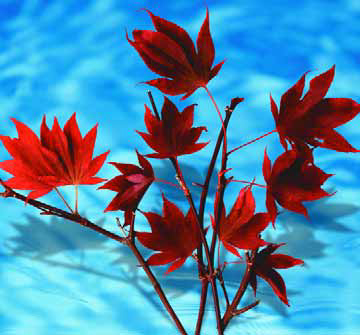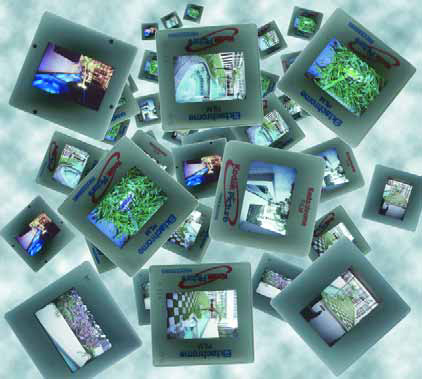ARTICLES
Advance Search
Aquatic Health
Aquatic Health, Fitness & Safety
Around the Internet
Aquatic Culture
Aquatic Technology
Artful Endeavors
Celebrity Corner
Life Aquatic
Must-See Watershapes
People with Cameras
Watershapes in the Headlines
Art/Architectural History
Book & Media Reviews
Commentaries, Interviews & Profiles
Concrete Science
Environment
Fountains
Geotechnical
Join the Dialogue
Landscape, Plants, Hardscape & Decks
Lighter Side
Ripples
Test Your Knowledge
The Aquatic Quiz
Other Waterfeatures (from birdbaths to lakes)
Outdoor Living, Fire Features, Amenities & Lighting
Plants
Ponds, Streams & Waterfalls
Pools & Spas
Professional Watershaping
Structures (Editor's Notes)
Travelogues & History
Water Chemistry
WaterShapes TV
WaterShapes World Blog
Web Links
Around the Internet
Aquatic Culture
Aquatic Technology
Artful Endeavors
Celebrity Corner
Life Aquatic
Must-See Watershapes
People with Cameras
Watershapes in the Headlines
Tucked into a small cove in the mountains behind La Quinta in California's lower Coachella Valley, The Quarry Golf Club is hidden, ultra-private and basically unknown to all but members of the golfing elite and the wealthy few who play the course. First conceived by entrepreneur Bill Morrow and designed by renowned golf course architect Tom Fazio, the course is a prime example of just how beautiful golf courses can be - and of how critical a role landscaping and watershapes can play in defining their character and aesthetics. Our challenge was to embroider the course's 18 PGA-sanctioned, championship-caliber holes with
For the most part, the designers and builders of pools, spas and other watershapes visualize their projects in full sun, install them during daylight hours and seldom (if ever) see them after the sun goes down. That's both a problem and a shame, and it's reflected in the fact that the run of projects you encounter by mainline pool-industry folks - and, to a lesser extent, by people from the landscape trades - tend to treat the lighting of exterior spaces as an afterthought if it's really thought about at all. In fact, I'll go so far as to say that
If I could point to one plant that will consistently stand out in just about any garden, it would have to be the maple. Virtually no Asian-style garden would be complete without one, and they fit beautifully into gardens of many other styles as well. I particularly like pairing maples with watershapes because of their tendency to soften the edges of typical hardscapes and the way they are reflected by the water. When placed well, a specimen or single maple can indeed be a key
Earlier this year, I was treated to a guided tour of The Quarry Golf Club in La Quinta, Calif., by landscape architect Ken Alperstein. Although I had seen pictures of the course and was also
When you look at this project in finished form, there's no way to see the months of struggle or the overall level of difficulty that went into its creation. You don't see the fact, for example, that we discovered while excavating the courtyard that the house itself was in imminent danger of collapsing. You don't see that the narrow access way buckled when we first started working, or the ugly trauma of the broken septic tank. You can't see the continuous changes in thought, direction and design that went into the deck, or the tremendous time and effort required to make the
It's a little too easy to lose sight of what holds the most meaning our work as watershapers - even when it's out there in plain view. In fact, if we're to be honest in assessing the palette of finish materials we use, I think most of us would have to concede that these products can become so familiar that thinking creatively about the full spectrum of their possibilities is something that often falls by the wayside. I believe we should be on guard against
The fire came swiftly, sweeping through the dry, late-summer undergrowth, and the land was quickly blackened and denuded. A month later, the rains came, hard and lashing, and rivulets of water ran down the hillside. Torrents of mud and stone ground away the soil and washed out the base of a tree that happened to be in the way. The tree fell. Branches became splinters on the ground. The noise the tree had made as it fell was intense: a cracking and groaning sound followed by crackles as limbs snapped against still-standing trees. Now it lay there, its roots all but pulled from the ground.Ten years passed, and as the tree's bark rotted, small saplings had begun to grow from its base. The creek ran close by, gurgling and never-ending, its water wending its way among the rocks and other fallen trees toward the ocean just half a mile away. This tree would serve a purpose in its death: In my work as a sculptor, I seek out
It began as the playful vision of Bob and Kat Tudor, husband-and-wife philanthropists and founders of The Smokebrush Theatre in Colorado Springs, Colo., who decided one day to donate a unique fountain to the children of their city. Now that vision, fully realized, belongs to the citizens of this sprawling town at the foot of the Rocky Mountains in the form of a dazzling water display and a folksy character named Uncle Wilber. Multi-talented artists in their own rights, the Tudors developed the aesthetic and creative concepts but knew from the start that they would need to enlist advanced technical expertise to
Most coffee-table books on swimming pools published to date have dealt almost exclusively with the work of architects and landscape architects. The past year, however, has seen the publication of three new books about pools - each of them focusing primarily on the work of pool contractors. The result is three books that cover a broad range of styles and designs - a trio I've already found to be extremely useful as






















